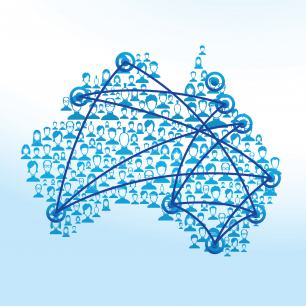
It has been long recognised that illicit drug traffickers can and do trade in multiple drugs. For example, more than ten years ago, Australian law enforcement agencies highlighted the “convergence of criminal networks and, concomitant to this, poly-drug trafficking” and the challenges this may bring to drug law enforcement and the broader community (Gordon, 2001, p. 22). Yet, research and policy tend to focus on single illicit drug markets alone. Yet, the extent, nature and implications of an inter-connected marketplace are not well understood. In light of increasing evidence that in comparison with their mono-drug counter-parts, poly-drug traffickers may be more resilient, adaptable and harmful, this project starts to examine Australia’s poly-drug and poly-crime traffickers.
Dr Michael McFadden (McFadden Consultancy)
It has been long recognised that illicit drug traffickers can and do trade in multiple drugs. Yet, for a range of reasons, both methodological and conceptual, the extent, nature and implications of poly-drug trafficking are not well understood. The lack of attention to poly-drug trafficking within Australia is of concern as international agencies have identified an apparent rise in drug traffickers (particularly high level drug traffickers) choosing to deal in multiple different drugs and it is conjectured that this may make such traffickers more profitable, dynamic, and resilient to changes in drug supply and drug law enforcement (EMCDDA, 2014; Europol, 2011, 2013; National Drug Intelligence Center, 2012; United Nations Office on Drugs and Crime, 2014a). This project sought to provide the first detailed examination of poly-drug and poly-crime trafficking in Australia, focusing on the actions of high level traffickers (importers and wholesale distributors).
- To estimate the proportion of high-level drug traffickers at Australian borders connected with importation of more than one illicit drug and trends in the extent and nature of poly-drug trafficking from 1999 to 2012
- To generate and compare profiles of Australian poly-drug traffickers and mono-drug traffickers
- To explore how product diversification is managed in high-level Australian multi-commodity drug trafficking networks
- To build research and law enforcement expertise to tackle Australian poly-drug commodity traffickers
Three distinct but complementary lenses were used to examine these issues.
- Trend analysis of Australian Federal Police (AFP) seizure data on all commercial poly-drug and mono-drug importations from 1999-2012. In this component we examined whether there was growth in the number of poly-drug importations from 1999 to 2012. We then examined trends in poly-drug as compared to mono-drug commercial seizures from 1999 to 2012 on indices including drug type(s), seizure weight, drug transport mode and state of importation.
- Quantitative and qualitative analysis of profiles of poly-drug and mono-drug traffickers. In this component we supplemented the traditional analysis of seizure data alone using a sub-sample of AFP drug trafficking cases and linked-cases. We then compared commercial poly-drug and mono-drug cases and linked-cases to see whether as hypothesised poly-drug traffickers pose more harm on indices including the total quantity and value of drugs seized, size of criminal networks (number of identified offenders and suspects), and extent of involvement with other forms of criminal activity (such as money laundering, fraud and other crime).
- Social network analysis of three Australian poly-drug and poly-crime trafficking networks. In the final component three networks were selected in conjunction with law enforcement advisors. Network maps were then constructed using judges sentencing comments and media reports to identify the number of people involved in each poly-drug network, drug flows, management structures, key brokers and benefits/limitations of engagement in this form of criminal behaviour.
All analyses have been completed and a report has been submitted to the National Drug Law Enforcement Research Fund (NDLERF).
Hughes, C., Chalmers, J., Bright, D., & McFadden, M. (under review) Trafficking in multiple commodities: Exposing Australia’s poly-drug and poly-crime networks, NDLERF Report.
This will provide the first systematic examination of the extent and nature of poly-drug and poly-crime trafficking in Australia and the implications of this form of trafficking for drug law enforcement and other agencies.



